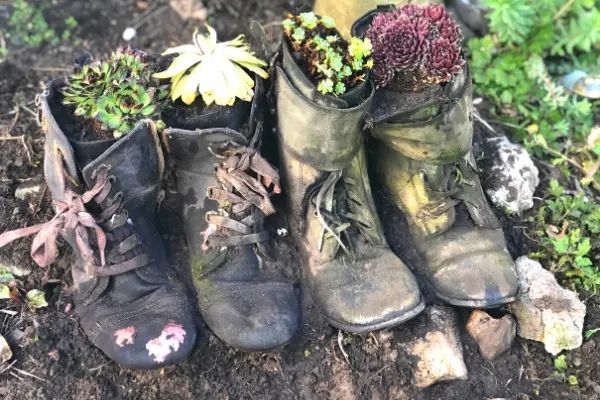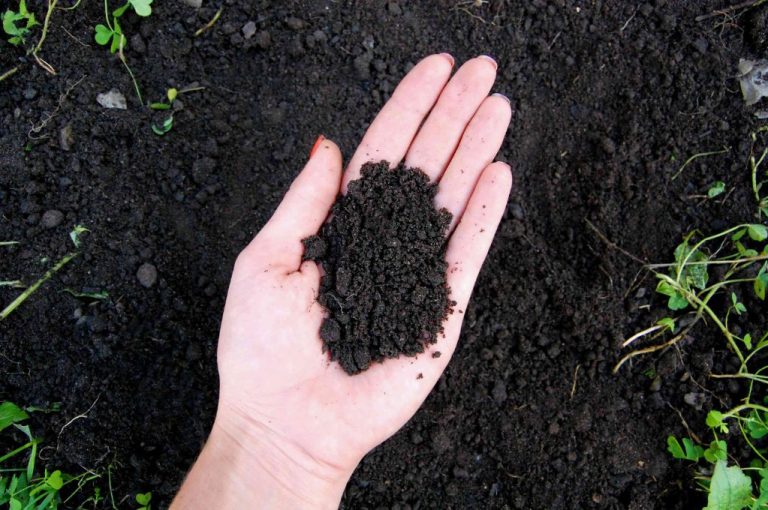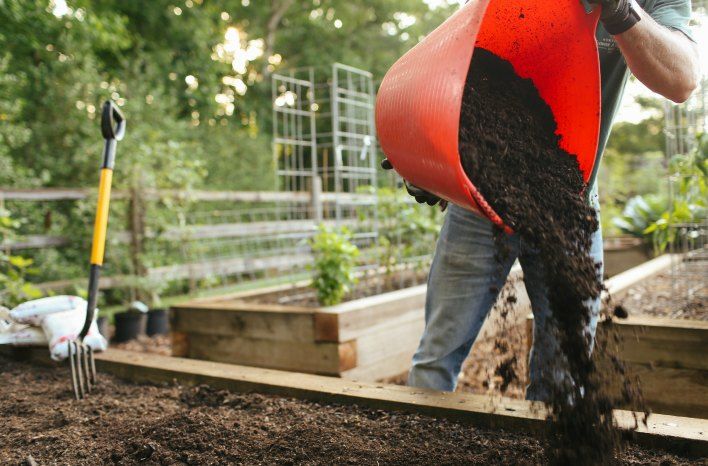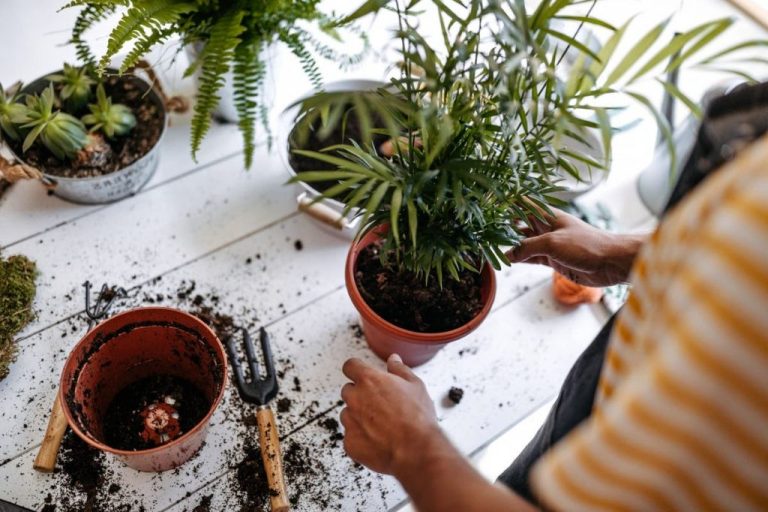Essential Gardening Tools For Beginners: What You Need To Get Growing
Growing your own fruits, vegetables, and flowers can be an extremely rewarding experience. There’s something special about nurturing plants from seed to harvest that brings great joy and satisfaction. When you grow your own produce, you can ensure you’re eating the freshest, healthiest food possible. Plus, you get to choose from a wider variety of produce since you’re not limited to what’s available at the grocery store. Flowers grown in your own garden provide lovely pops of color and can be used to decorate your home or given as gifts. Overall, gardening allows you to take pride in reaping what you’ve sown. It connects you with nature and the cycles of life in a profound way. While there may be some effort involved, the end result of harvesting your own garden-grown bounty is well worth it.
Trowel
A hand trowel is one of the most essential tools for gardening beginners. As noted in the Almanac’s “Guide to Gardening Tools”, trowels are perfect for “digging small holes for planting annuals, perennials, bulbs or small seedlings”. They allow you to precisely dig holes and trenches for planting seeds and transplanting seedlings with minimal effort and disruption to surrounding soil and plants.
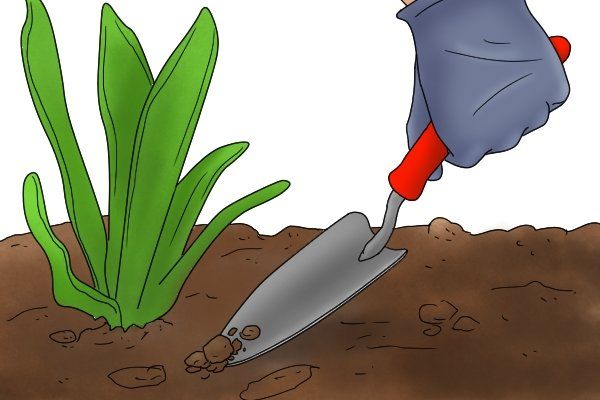
Trowels come in a variety of sizes and shapes. For most beginner garden tasks, a basic, scoop-style stainless steel or aluminum trowel is ideal. Look for trowels with large, comfortable handles that fit your hand well and avoid flimsy plastic models which can easily bend or break. The experts at Garden Design recommend avoiding trowels with sharp, pointed blades which can damage roots. A small 4-6 inch scoop style trowel is just right for most basic gardening needs.
When transplanting seedlings or small plants, use your trowel to loosen soil and carefully dig up the plant while minimizing root disturbance. Dig a hole slightly larger than the root ball and use the trowel to gently loosen roots and place the plant at proper depth. Backfill soil and press firmly around the base. A quality trowel makes the planting and transplanting process quick and easy for beginners.
Garden Fork
A garden fork is an essential tool for turning and loosening soil, as well as harvesting root vegetables like potatoes, carrots, and onions. The sharp, thick tines on a garden fork allow it to easily penetrate compacted soil and break up clods without damaging plant roots or tubers (Quality Garden Forks | Garden Tool Co.).
When preparing a new garden bed, use a garden fork to turn the soil, removing any weeds and breaking up large clumps of dirt. A garden fork aerates the soil better than a spade or shovel. It’s also useful when digging narrow trenches for planting seeds or seedlings. For established beds, gently loosen the top few inches of soil with a fork to prevent compaction.
Garden forks are ideal for harvesting root crops like carrots and potatoes without bruising or nicking the vegetable. Insert the tines around and under the roots to loosen the soil. Then carefully lift the vegetable out of the ground. The fork tines help sift away excess dirt as you lift. For harvesting onions and garlic, use a garden fork to first loosen the soil before pulling the bulbs by hand.
Look for a forged, stainless steel garden fork with a D-shape handle that fits comfortably in your hand. Fork tines are typically 6 to 10 inches long. Shorter tines give you more leverage in heavy soil. Longer tines are better for deep cultivation. Make sure to clean soil off your garden fork after each use.
Hoe
A hoe is an essential gardening tool for weeding and breaking up soil crusts. The blade of the hoe can cut through soil to sever weeds below ground level. A sharp hoe makes quick work of dislodging pesky weeds. Using a hoe to stir and loosen the top layer of soil helps improve aeration and prevent crusting.
According to Home Depot, “A hoe is a garden hand tool used to cultivate the soil and remove weeds. It’s an ancient tool that predates the plow. Hoes were used in ancient Egypt and in the development of agriculture.”1
Gardening Know How explains, “A hoe is used to dislodge weeds or for cultivating the garden, stirring up and mounding the soil. It’s an important tool for any serious gardener.”2 Using a hoe properly allows gardeners to maintain a healthy, weed-free growing area.
Gardening Gloves
Gardening gloves are essential for protecting your hands while working in the garden. According to the University of Queensland Institute of Molecular Bioscience, gardening gloves help safeguard your hands against thorns, dirt, and grime (source). Wearing the proper gloves for the gardening task at hand can prevent cuts, scrapes, and skin irritation from handling prickly plants or irritating substances.
Gloves form a protective barrier between your skin and dangerous garden hazards like sharp tools, toxic chemicals, harmful insects/animals, and rough or prickly plants. The padding in gardening gloves cushions your hands and prevents calluses when using gardening tools for long periods. Gloves also help keep hands clean when dealing with potting soil, fertilizers, compost, and mulch (source). For beginner gardeners, a basic pair of gloves is a must-have to keep hands safe while learning the ins and outs of gardening.
Watering Can
A watering can is an essential gardening tool for effectively watering plants. Watering cans allow you to directly apply water at the base of plants, avoiding water loss from evaporation or runoff. They also give you precise control over where and how much you water.
When selecting a watering can, opt for one made from galvanized steel or plastic with a spout and removable rose head attachment. The rose head breaks up the stream of water into a gentle shower. Look for a watering can with a capacity of 1-2 gallons and a handle designed for easy gripping and tipping.
Watering cans are useful for nourishing potted plants, newly planted seedlings, vegetable gardens, and flower beds. The targeted application prevents fungal diseases that can occur from wetting foliage. It’s best to water early in the day so plants can absorb moisture before hot sun leads to evaporation. Water close to the soil level and slowly to allow deep penetration.
Some key tips when using a watering can (Source: The Home Depot):
- Water at the base of plants, not from overhead
- Water until the soil is fully saturated and excess drips out the bottom of pots
- Avoid watering during the heat of day when evaporation is highest
- Check soil moisture before watering – don’t follow a fixed schedule
With the right technique, a simple watering can is an effective tool for hydrating plants and helping gardens thrive.
Garden Shears
Garden shears are an essential tool for trimming plants and cutting stems in the garden. They typically have short blades and spring-loaded handles to make repetitive snipping easy on the hands. While pruning shears are ideal for cutting thicker branches, garden shears are perfect for delicate pruning and deadheading flowers.
Look for quality garden shears with stainless steel blades that resist rust and keep a sharp edge. Bypass blade shears, where one blade slides past the other like scissors, make the cleanest cuts. Some garden shears also have a safety lock to protect the blades when not in use.
Proper care will keep garden shears working smoothly. Wipe off sap and dirt after each use and apply a lubricant to the pivot point. Sharpen the blades annually. With the right pair of shears, you’ll have an easy time keeping your garden neat and tidy.
Wheelbarrow
A wheelbarrow is an essential tool for transporting heavy materials around the garden (source). It allows you to move soil, mulch, compost, plants, and other items from one place to another with ease. Wheelbarrows come in different sizes, but a medium one with a 3-4 cubic foot capacity is ideal for most home gardens.
When selecting a wheelbarrow, look for one with inflatable tires for easy rolling and increased maneuverability. The tray should be made of seamless steel or plastic to avoid leaks. Two-wheeled designs offer more stability and control compared to one-wheeled models.
Some key uses for a wheelbarrow in gardening include:
- Transporting bags of soil, compost, mulch etc. from the store to your garden.
- Moving soil and bedding plants into raised beds or containers.
- Hauling weeds, clippings and other “green waste” to the compost pile.
- Potting and repotting larger plants.
With a good wheelbarrow by your side, gardening tasks become much easier. The right model allows you to work efficiently and transport heavy materials without strain.
Garden Basket
A garden basket is an essential tool for collecting weeds and harvested vegetables as you work in the garden. The basket allows you to keep all your garden materials in one place as you move around the garden bed. Look for a sturdy basket with a handle that will be easy to carry and dump out. A metal or plastic basket will be more durable than a wicker basket.
Garden baskets are perfect for collecting weeds as you pull them so you don’t have to stop working to discard them. Simply place all the weeds in your basket as you work through the rows. When the basket fills up, dump it in your compost or trash.
Harvest baskets also help you efficiently collect your ripe vegetables. Place your tomatoes, zucchini, beans, and other crops into the basket as you pick them. Some people like to bring a scale along and weigh their harvest right in the basket! Having a basket keeps your fresh produce organized and makes it easy to transport to your kitchen for washing and storage.
For recommendations on durable and spacious harvest baskets, check out this article.
Kneeling Pad
A kneeling pad is an essential gardening tool for comfort and joint protection. Gardening often requires staying in a kneeling position for extended periods of time which can be uncomfortable and hard on the knees.
Kneeling pads provide cushioning and support when working on hard surfaces like soil, gravel or concrete. The thick foam pads help absorb pressure and reduce strain on joints in the knees, hips and back that can lead to pain and arthritis over time (https://bisonlifeusa.com/blogs/news/benefits-of-using-gardening-knee-pads). Using a pad allows you to work comfortably in the garden without having to take breaks due to discomfort.
Look for kneeling pads that are waterproof and durable yet comfortable enough for long wear. Gel pads offer contouring cushion that conforms to the knees. Some options like the Terra Kneeler even convert into a seat, providing versatile support in the garden.
Protecting your joints while gardening is crucial for longevity in the hobby. Kneeling pads are an affordable essential that enhances comfort and prevents long term damage to the knees, making gardening enjoyable for beginners and experts alike.

